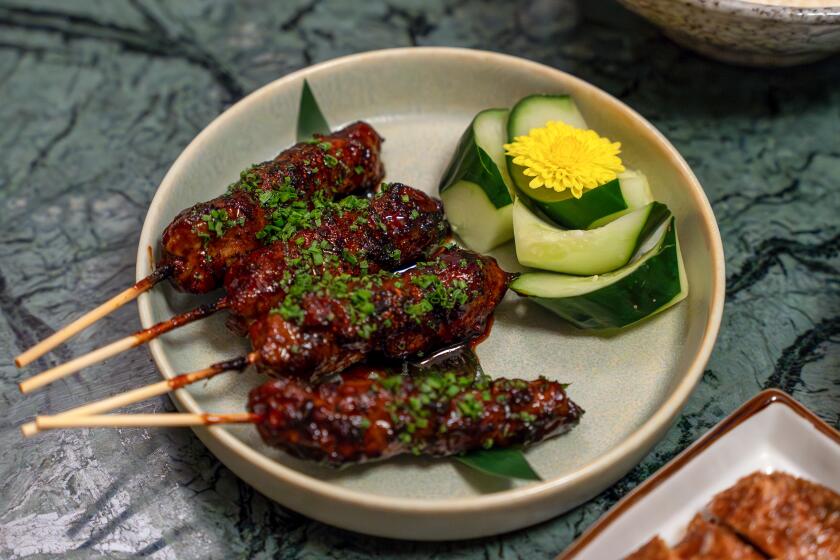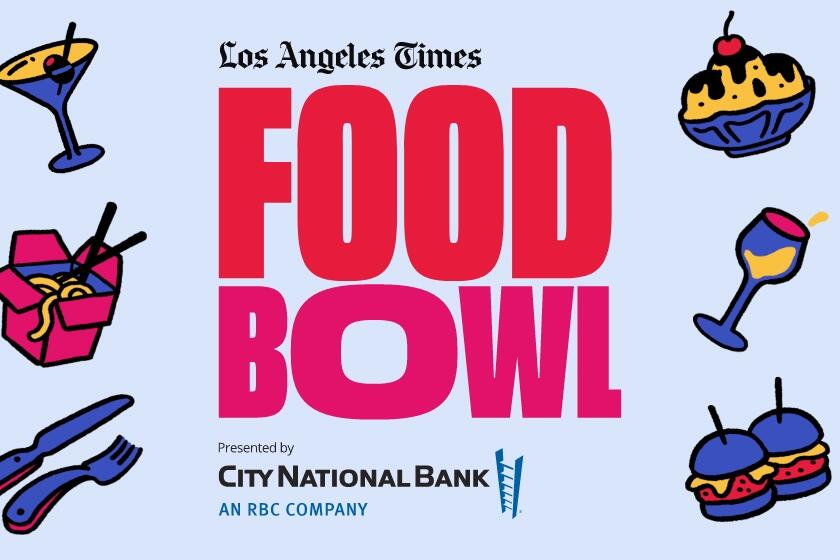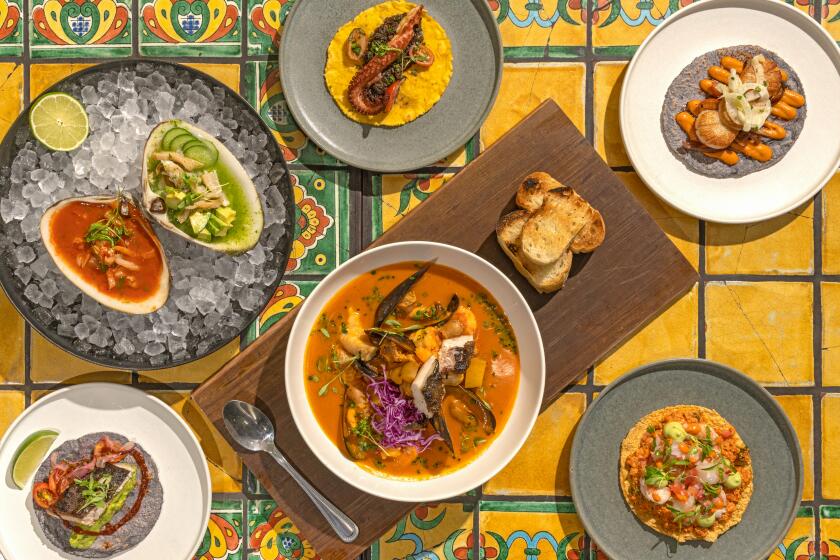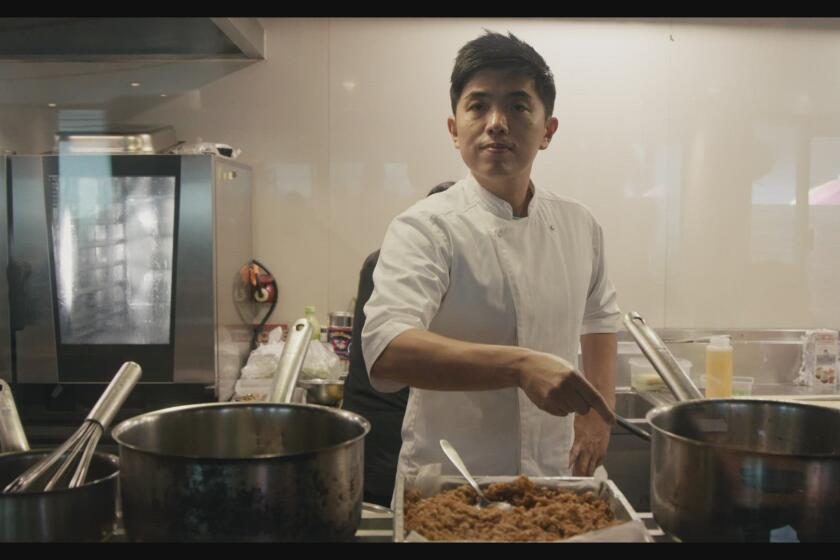- Share via
Singapore — Chef Malcolm Lee isn’t worried about the approval of media critics or awards judges. Lee, 39, has earned a Michelin star at one of his Singapore restaurants and a place on the World’s 50 Best Restaurants Asia list. But what really keeps him up at night, fueling the late hours and countless recipe revisions, is the opinion of a single woman.
“You know, my mom is very particular,” he says. He’s sitting in the dining room on a recent afternoon at Candlenut, his 13-year-old restaurant in Dempsey Hill, an area known for its upscale shops and restaurants. The restaurant’s namesake ingredient is similar to the macadamia nut, used as an oil-intensive thickening agent in various dishes. Above him, dozens of straw lanterns glow and hang from the ceiling.
“It’s very dangerous when she comes to try our dishes,” he says with a laugh. “It’s more scary than the Michelin inspectors.”
- Share via
Lee makes Peranakan food, an intensely flavorful, nuanced cuisine that mostly incorporates influences from Malay, Indonesian and Chinese culture, ingredients and techniques. In many ways, Peranakan is a style of food that stands in opposition to the hyper development and modernization that’s characterized Singapore for most of the 20th century.
“Singapore is very modern,” Lee says. “It continues moving at a very fast pace, such that this kind of traditional slow-cooking foods are slowly being forgotten.”
It’s the Peranakan food made by his mother that he wants to capture at his restaurant and share with the rest of the world. It’s the flavors of the chicken curry his mother prepares for countless family gatherings that he’s hoping to get just right. The nostalgia of hand-pounded spices in his mother’s kitchen that he’s striving to capture.
From fine dining to hawker centers, here’s a guide for where to eat and drink in Singapore, including unconventional Middle Eastern cuisine, a hidden speakeasy and carrot cake.
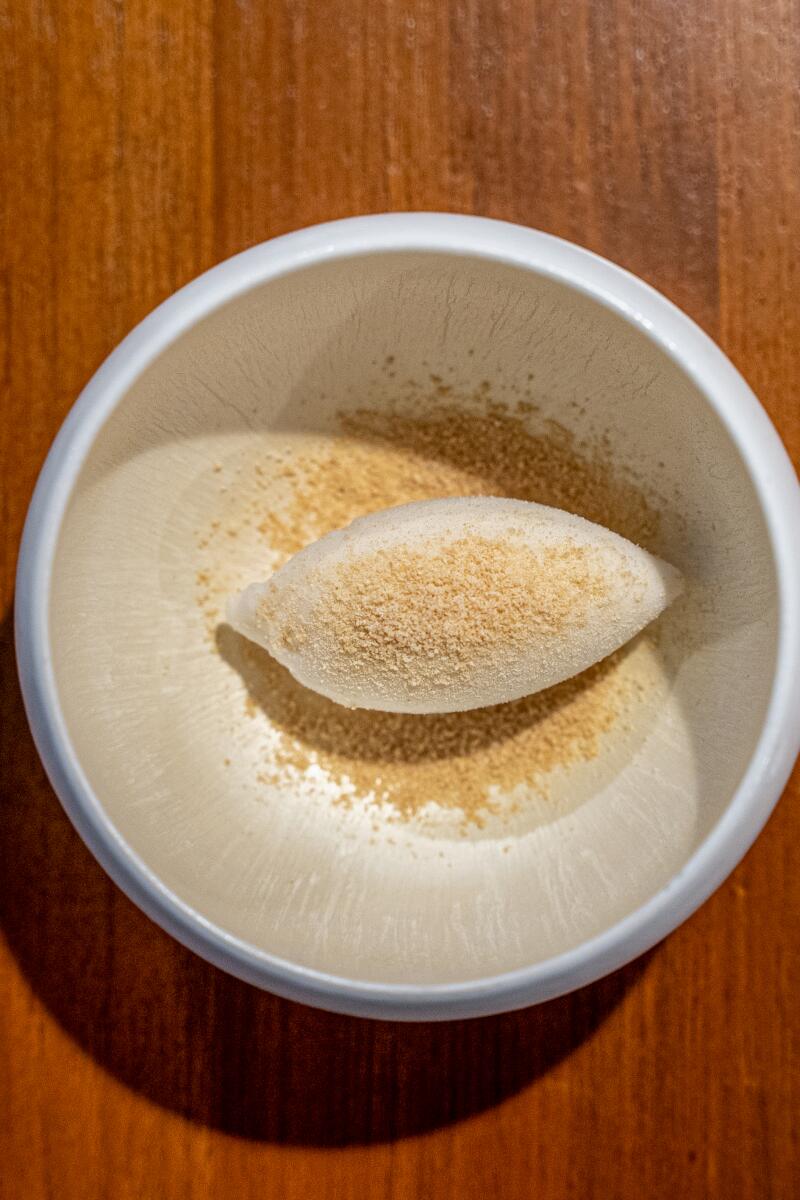
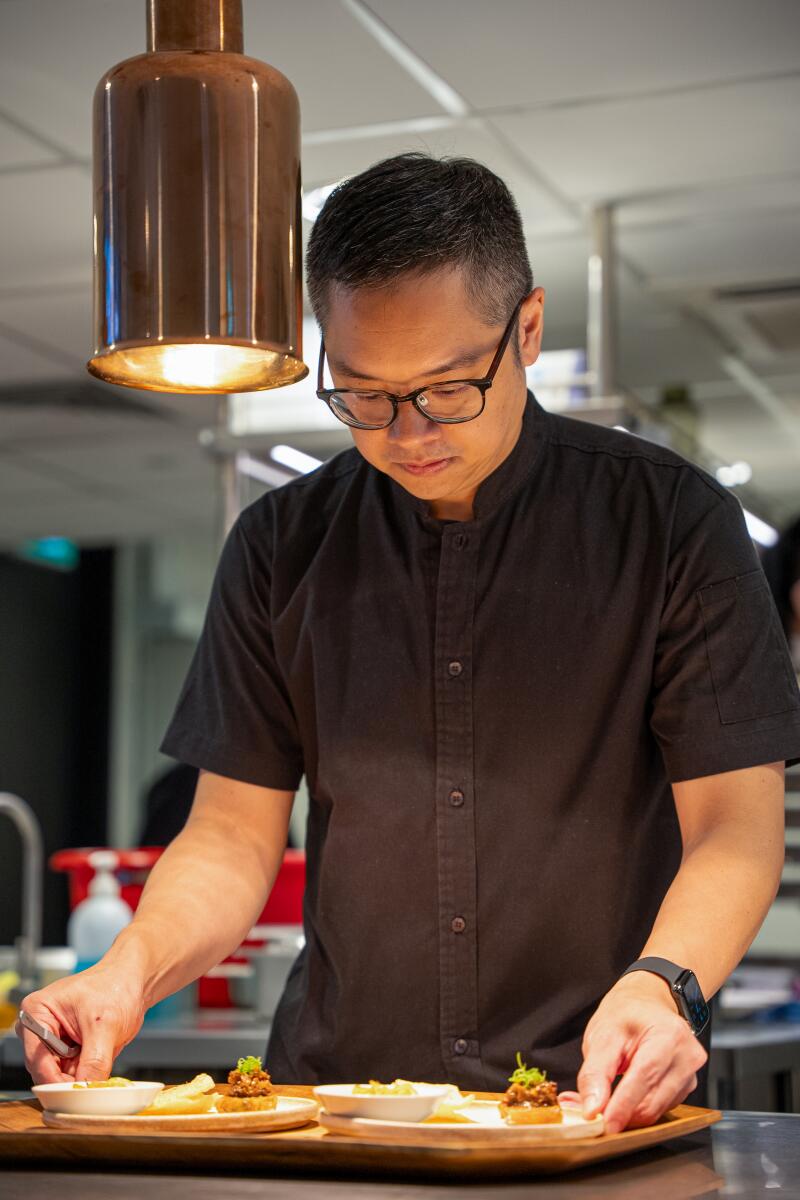
The Sagun dessert at Pangium restaurant in Singapore. At the center is a coconut sorbet topped with sagun, a sweet coconut sand made with coconut and glutinous rice. (Cody Long / Los Angeles Times) Chef Malcolm Lee prepares a dish in the kitchen at Pangium restaurant in Singapore. (Cody Long / Los Angeles Times)
“I’m a fourth-generation Peranakan,” he says. “Singapore many years ago was a fishing village and the indigenous people were the Malay community, but because of the location, many people came from different parts of the world. This is where the culture really started from.”
I’m meeting Lee, more than 8,700 miles across the Pacific Ocean, to learn more about Peranakan food and what to expect when he heads to Los Angeles this month. Lee is slated to cook at the Los Angeles Times Food Bowl launch party on Sept. 6 to help kick off our annual food festival.
He’ll also prepare a meal with the Outstanding in the Field pop-up dinner series on Sept. 3.
Malcolm Lee's Chicken Curry
The term Peranakan means “local born” in Malay, and generally refers to the descendants of Chinese immigrants and local Malays who lived in the Malay Archipelago in the 15th century.
“There are like Malay-style curries, then a bit of Indonesian from the north,” Lee says. “But at the same time you have Chinese dishes or Chinese soups. Chinese stir-fries as well. It’s a whole combination that is somehow familiar but at the same time unique.”
The cuisine itself reminds me in a way of the food scene in Los Angeles and its wonderful plurality. A Los Angeles style of food that encompassed all of our chefs and their unique cultural backgrounds is a similar form of melting pot of cultures that makes Peranakan food so special.

The most well known Peranakan dish is likely ayam buah keluak, or chicken bathed in a fragrant black sauce infused with galangal, lemongrass, shallots, garlic and buah keluak, a black nut that is poisonous when eaten raw.
After the nut has been boiled, fermented, washed and scrubbed thoroughly and soaked for days, the meat of the nut is safe to eat, and lends an earthy, bitter chocolatey flavor to any dish.
The menu at Candlenut is a celebration of Lee’s Peranakan heritage, with a collection of curries, stews, stir-fries and sambals. He sources many of his ingredients from Geylang Serai, a sprawling wet market and hawker center in central Singapore.
His mum’s chicken curry, now one of Lee’s signature dishes, is a generous, soothing bowl of turmeric-stained broth fortified with coconut milk and ground candlenuts.


Lee is obsessive about his mum’s curry, painstakingly chopping, pounding and grinding lemongrass, shallots, galangal, garlic and candlenuts. Once the curry paste and spice mix are made, he watches over the pot, layering the ingredients and waiting for each to reach the correct consistency and fragrance. He garnishes the dish with a heap of gossamer strands of makrut lime leaf.
It’s a slow process. Languorous or tedious depending on who you ask. It may take patience, but the result is otherworldly. A curry that vibrates with the seething heat of both fresh and dried chilies, bright lemongrass and the citrusy freshness of makrut lime.
“I tried to learn this style of food when I was young, but it was too time-consuming, too tedious and I kind of gave up after a while,” he says.
For years, Candlenut struggled. At one point, Lee was sleeping in the restaurant, wondering if he’d made a mistake when he doubled down on a cuisine he saw disappearing.
There was a crucial shift in the perception around Peranakan food when Singapore’s inaugural Michelin Guide was released in 2016. This is when Lee says people finally “started to get it.”

Candlenut earned a star, becoming the first ever Peranakan restaurant to be recognized by the guide, giving the food a place in the world’s culinary vernacular. The success allowed Lee the breathing room to further explore the cuisine and open his second restaurant Pangium (named for the English word for buah keluak).
Located at the top of a hill overlooking the Singapore Botanic Gardens, Pangium offers views of the lush gardens from every seat in the dining room. Here, Lee offers a tasting menu that showcases Straits cuisine, showcasing food from all over the region. Many of the dishes are an homage to a specific flavor, taste or memory from his childhood.
Jenee Kim’s Koreatown restaurant Park’s BBQ is an essential part of the flavors of Los Angeles — showing a generation of diners that Korean food is a thriving, evolving cuisine.
“A lot of people are actually getting to know the cuisine,” says Jessline Lee, senior operations manager of Lee’s restaurants. She also happens to be his wife.
“Peranakan cuisine is actually a very sort of old-school sort of food and it’s not very fashionable,” she says. “But when you step into the restaurant, you can feel a different vibe and the culture is very much alive as well as the cuisine itself.”
In the kitchen downstairs, Lee’s staff prepares the first courses of lunch for diners. They whisk away trays filled with small ramekins of keropok, a small puffed prawn cracker, and ngoh hiang, a bite-size sausage roll wrapped in bean curd.
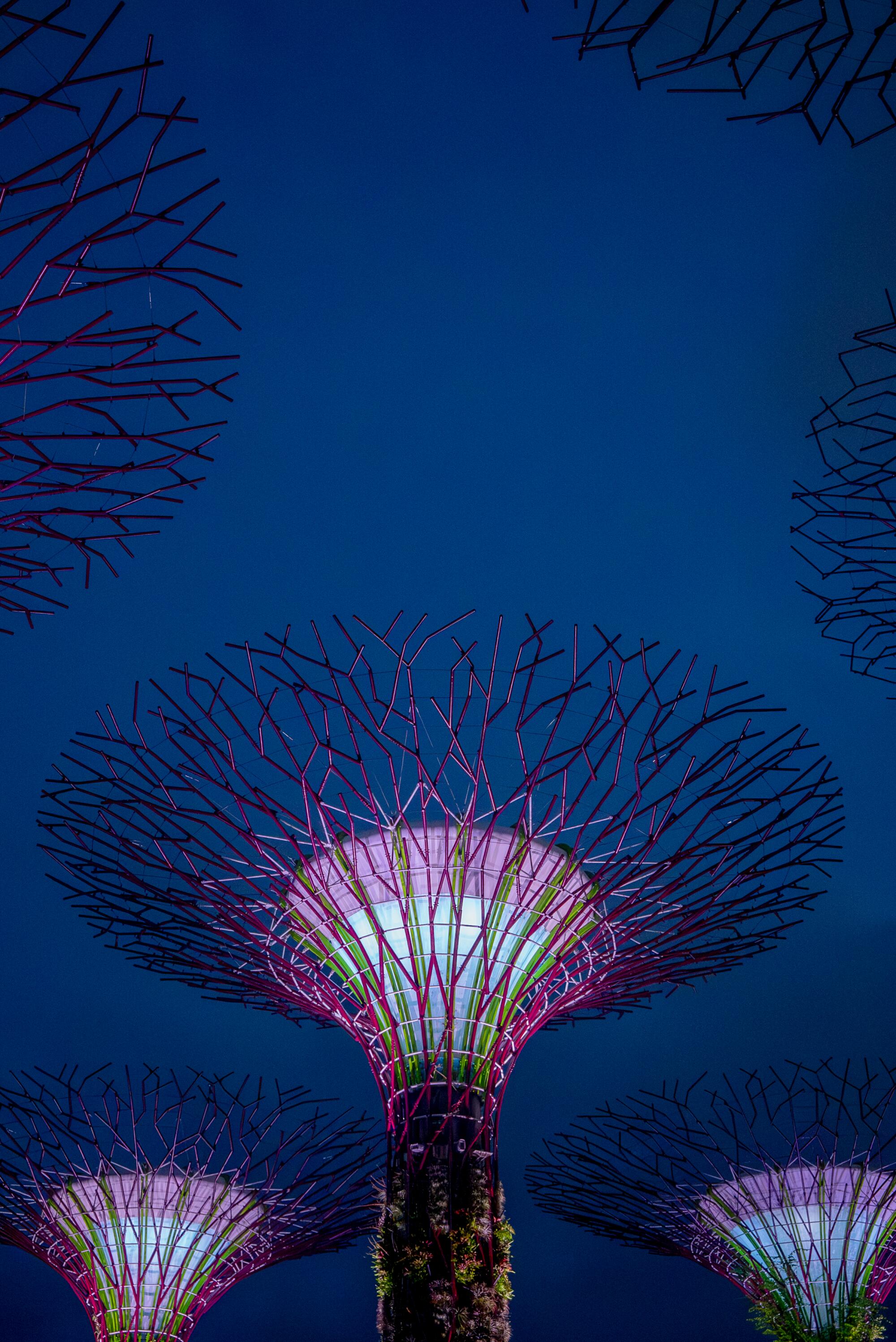
Next comes the pang susi, cracked and golden on top like a miniature pineapple bun with a filling of savory ground Iberico pork studded with candied winter melon and roasted coriander seeds. The pastry manages to be chewy and crumbly, soft and flaky all at once.
“This is something I ate as a child,” Lee says, handing over a small bowl with a single quenelle of young coconut sorbet covered in a fine golden sand.
The sand is actually sagun, a sweet coconut treat made from slowly roasting and drying coconut flesh, combining it with glutinous rice then grinding it into nearly a powder.
Why we chose the newly expanded mariscos stand in Historic South-Central’s Mercado la Paloma as our Restaurant of the Year.
“I served it to my grandmother and she said it brought back so many memories for her,” he says.
The cookbook he’s flipping through for inspiration is “My Favourite Recipes,” a book written by Ellice Handy, the first local principal of the Methodist Girls’ School in Singapore in 1952. At the time, many of the cookbooks were written by expats, and featured many European dishes. Handy’s book was full of local recipes such as liver curry and coconut candy, sambal goreng and rendang.
Chef Ton’s cooking career was already an act of defiance, and then he doubled down by using local ingredients at a time when fine dining was Eurocentric. It landed him at the top of Asia’s 50 best list.
It’s now out of print, but Lee’s copy is from 1960, and includes old measurements and handwritten notes from the previous owners. It’s one of his most prized possessions.
“As I started to learn more ... I feel that our Peranakan food stories, the history ... the heritage behind it has so much meaning,” he says. “And why should I not learn our own food and share our story with people?”
Where to eat Malcolm Lee's food in Singapore and Los Angeles
Food Bowl x Outstanding in the Field: Lee will cook a dinner at Wattles Farm, 1714 N. Curson, Los Angeles, Sunday, Sept. 3, tickets at lafoodbowl.com
Food Bowl launch party: Lee will participate in our Food Bowl launch party at Lemon Grove on the Aster Rooftop, 1717 Vine St., Los Angeles, Wednesday, Sept. 6, tickets at lafoodbowl.com
Candlenut, 17a Dempsey Rd., Singapore 249676, +65 1800 304 2288, cocodempsy.sg
Pangium, 11 Gallop Road Gallop Entrance, Singapore Botanic Gardens, Singapore 259015, www.restaurantpangium.sg
More to Read
Eat your way across L.A.
Get our weekly Tasting Notes newsletter for reviews, news and more.
You may occasionally receive promotional content from the Los Angeles Times.

